Solar Power is one of the green and renewable energies that has been widely used by energy companies worldwide to generate electricity for residential, commercial and industrial users. With the fast-growing deployment of Solar Power System globally, especially, countries like China, Japan, USA, Germany, India, Italy, UK, Australia, France and South Korea, the IoT technology has been widely used by energy companies to monitor their solar power systems, as it has enabled the energy company to remote monitor the edge devices, such as solar panel, battery, meanwhile, it helped to measure the energy generated by solar panel and consumed by users. What’s more, the IoT has helped to improve the operation efficiency and save cost on device management and maintenance.
This blog will tell you how IoT helps to transform the on-grid Solar Power system for residential users. Before this, we need to figure out what is Solar Power system? What are the key components of the system? How solar power system works?
1. What Is Solar Power System?
Solar power system, also called solar PV(photovoltaic) power system, which captures sunlight energy using solar panel to generate DC electricity and convert it into AC electricity by inverter, to power up home appliances, such as fan, TV, lights, electric cars, HVAC or manufacturing facilities, and it has been widely used by individual, or commercial and industrial users.
2. What Are the Key Components of Solar Power System?
- Photovoltaic solar panels: to capture sunlight and generate the electricity
- Inverters: to convert the DC electricity generated by solar panel to AC electricity, before distributed to home appliances.
- Charge controller: also called solar regulator, it’s used to monitor the battery health and avoid overcharged, normally used by off-grid solar system
- Battery: to store the electricity generated by solar panel, which is normally used in off-grid solar system.
- Electric box: normally also called Fusebox, for electricity transfer safety and networked to home appliances which receive power from the solar power system and utility grid.
- Meter: there are one direction PV meter to measure electricity generated, and utility meter to measure electricity consumption. Besides, for bi-directional meter, it can be used for monitoring the electricity generated from solar panel and power consumption either from solar panel or from utility grid.
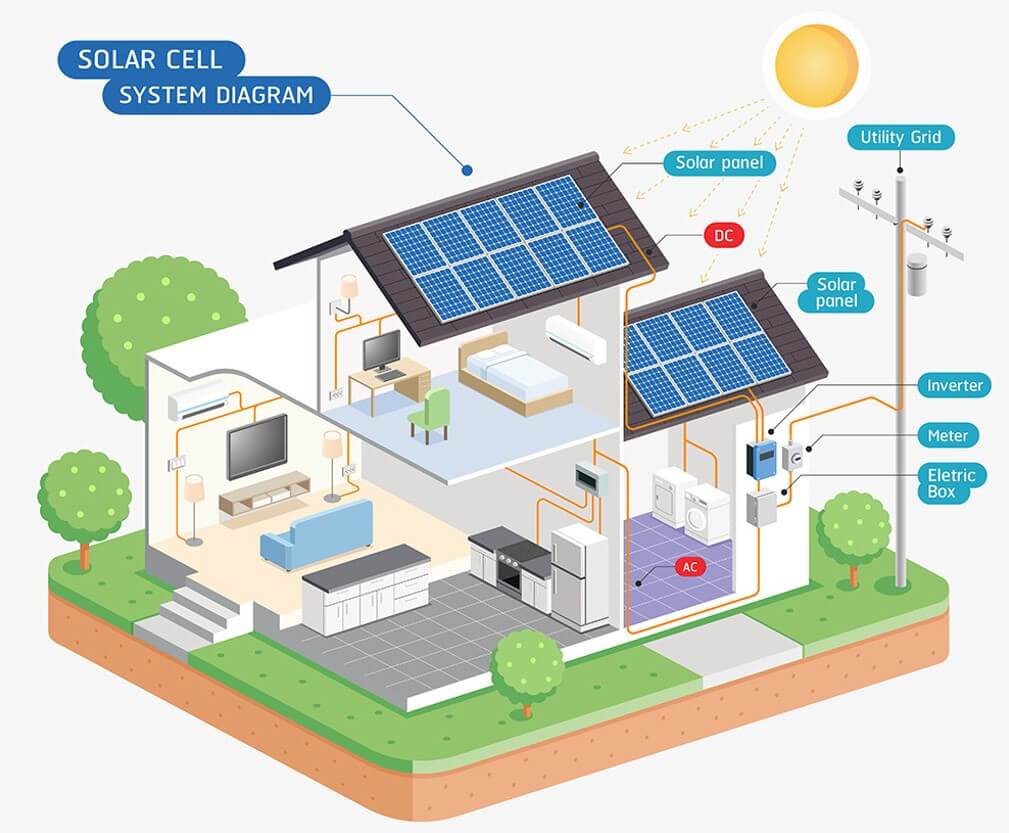
Image source: VectorStock
3. How Solar Power System Work?
As we can learn from the above diagram, the solar panel captures the sunlight energy to generate DC electricity, which will be converted to AC electricity by inverter to power up our home appliances, and energy meters to measure the electricity generated and consumption. Whether you need battery for your system, it will depend on your budget and application needs.
There are three types of solar power system, on-grid, off-grid and hybrid solar power system. What are the differences?
On-grid solar power system, also called grid-tied or grid-feed solar power system, which the excess electricity generated by solar panel will be transferred to utility grid, and it can be used as credit when solar power is low or there is bad weather.
Off-grid solar power system, also called stand-alone power system, which requires additional battery to store the electricity to ensure electricity supply even when there is bad weather, as there is not additional electricity supplied by utility grid.
While for hybrid solar power system, it is the combination of on-grid and off-grid solar power system, a grid-connected solar system with battery storage, which will have battery to store the excess electricity generated by solar panel, meanwhile, the excess electricity will be transferred to utility grid as a credit. In addition, when solar power is low, you can get electricity from either battery or utility grid.
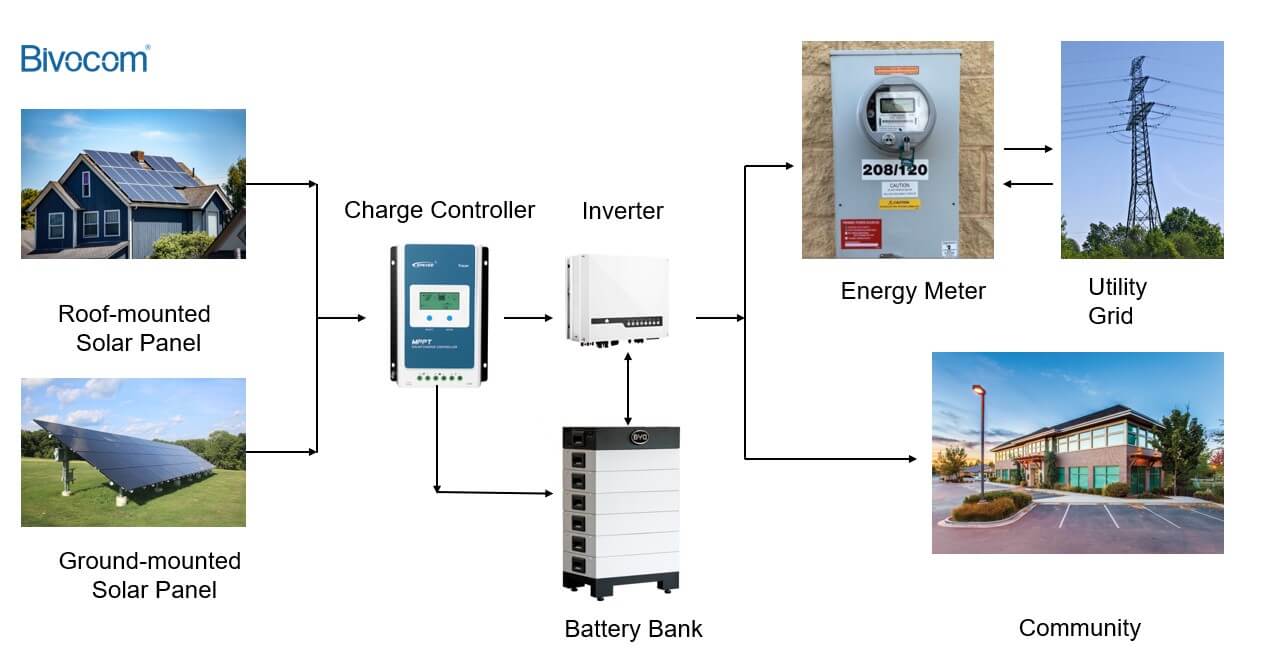
4. How IoT Helps to Transform the Solar Power System?
Nowadays, solar power system has been widely by residential, commercial and industrial users for a plethora of reasons. For individual users, not only can they have an independent power supply system, but also can they sell the excess electricity to energy company. While for commercial and industrial users, it will help them to reduce the production cost, besides, they can get tax rebate and incentives from government. However, with the fast deployment and expansion of solar power system, energy companies have faced challenges of managing and measuring the electricity generated by solar panel and consumed by users, and edge devices maintenance, as well as improving their service to users.
Thanks to the IoT and 5G/4G technology, which has helped the energy companies to make the solar generation and service visible, measurable and cost-effective. As they can install IoT edge gateway onsite to bring the edge devices data to cloud via serial port, ethernet ports or WIFI, where they can monitor the electricity generated and consumed, health of edge devices, and this has improved the customer satisfaction of service, operation efficiency, reduce maintenance cost.
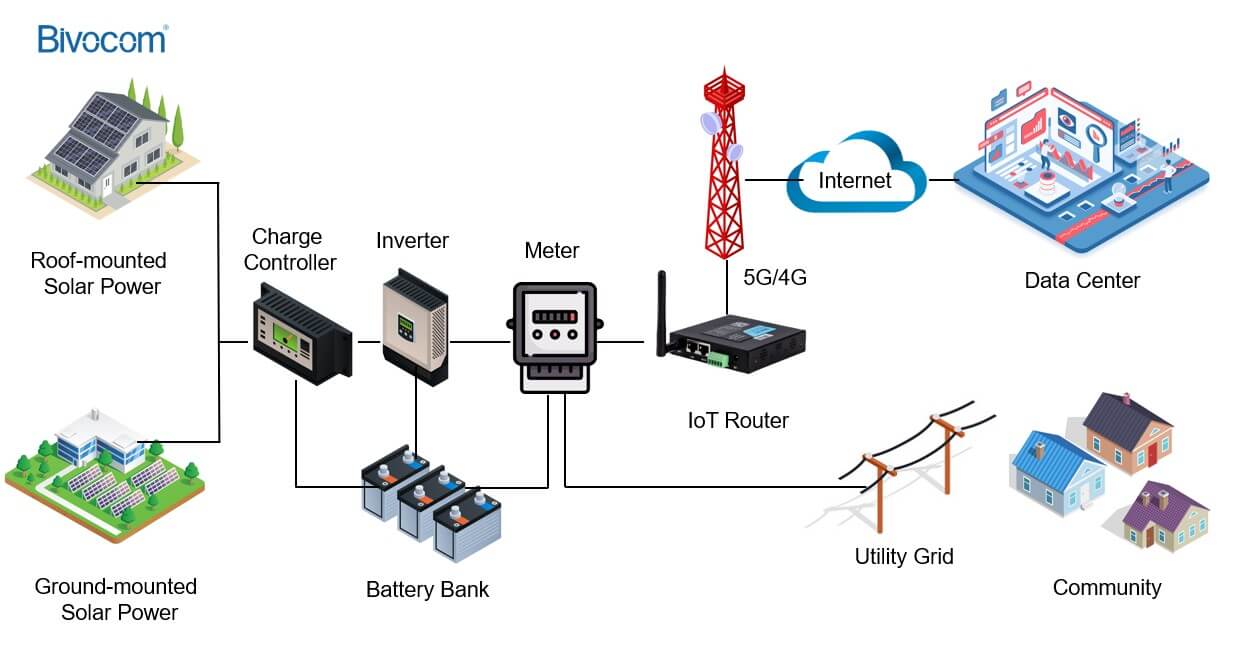
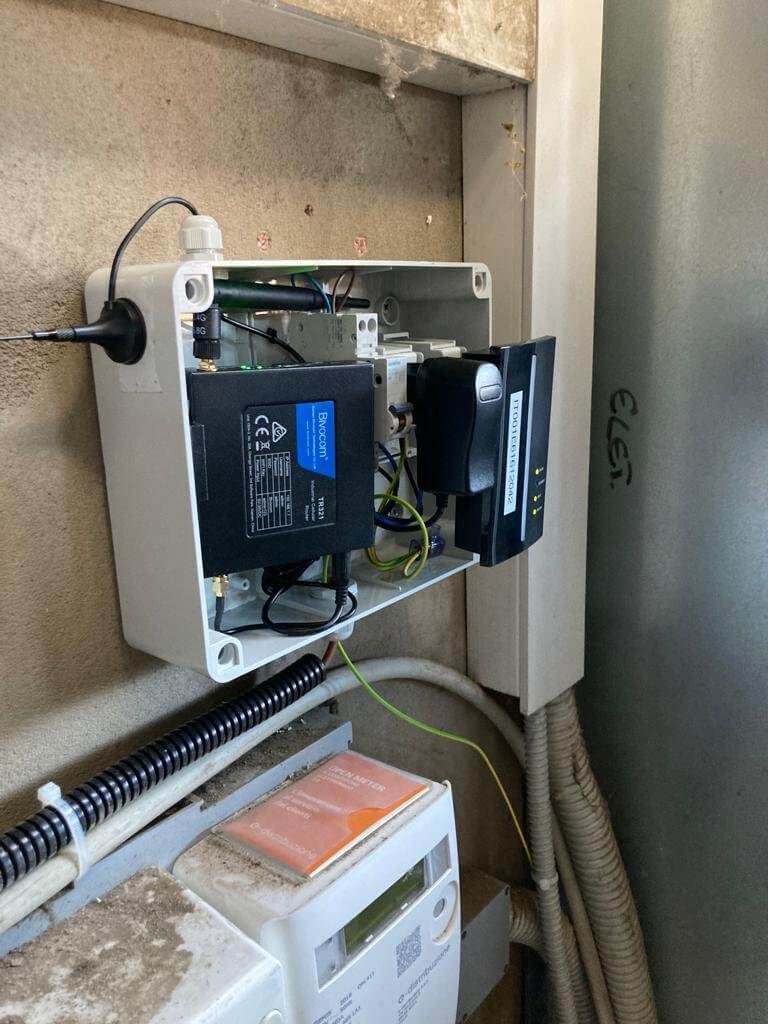
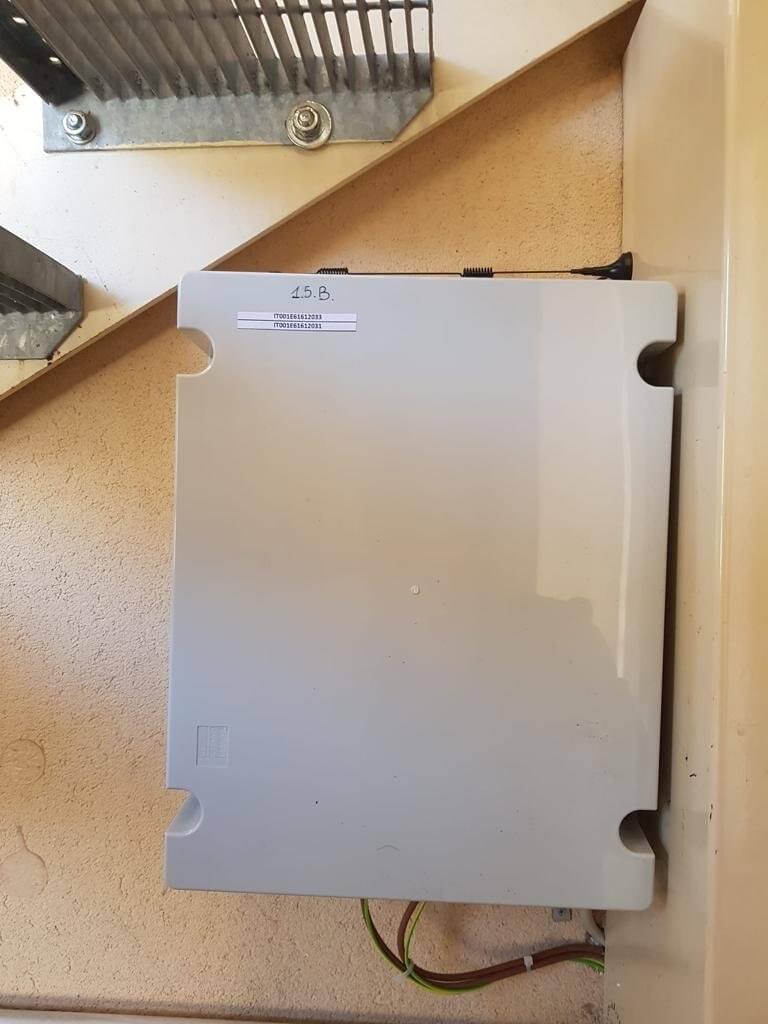
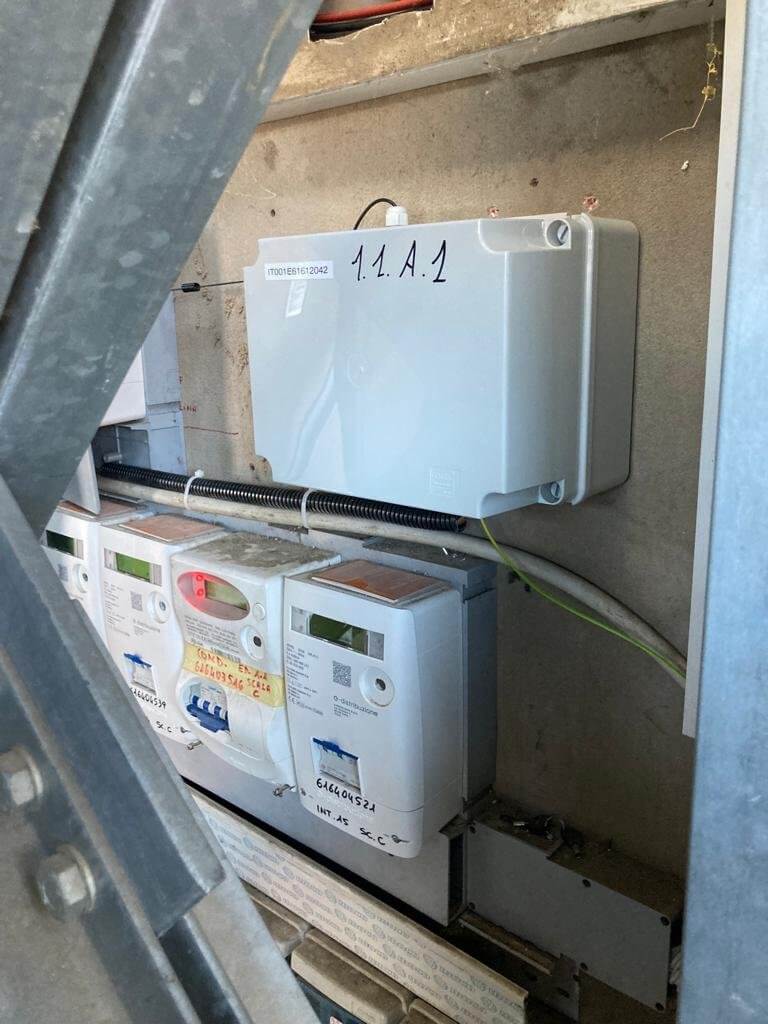
Today, more and more countries are announcing pledges to achieve net zero emissions by 2050, so we can predict that solar power will play an more important role in global energy then, while with the implement of 5G, the IoT will continue to transform the solar industry.
Related links:
4G and IoT Technology Empowers Smart EV Charging Stations
Bivocom Partners with Envison to Deliver a Smart Energy Monitor Solution to Singapore
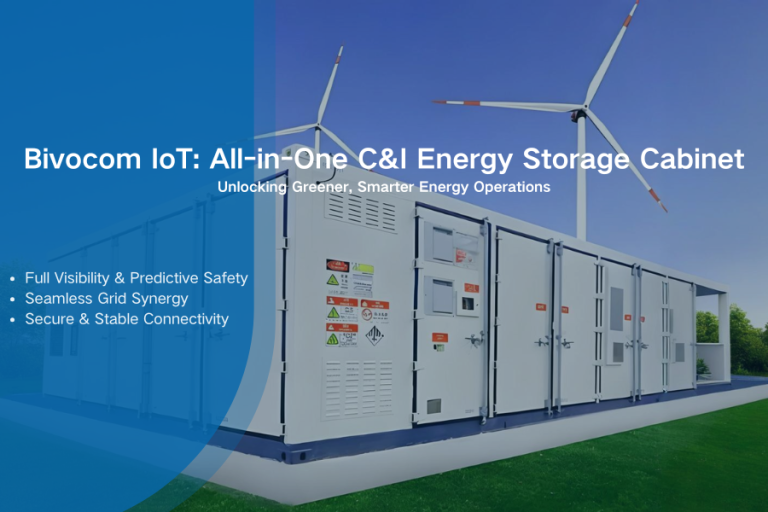
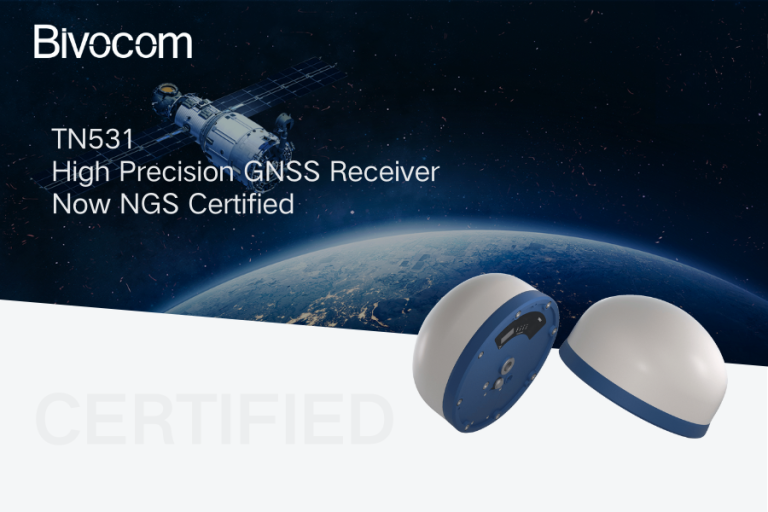
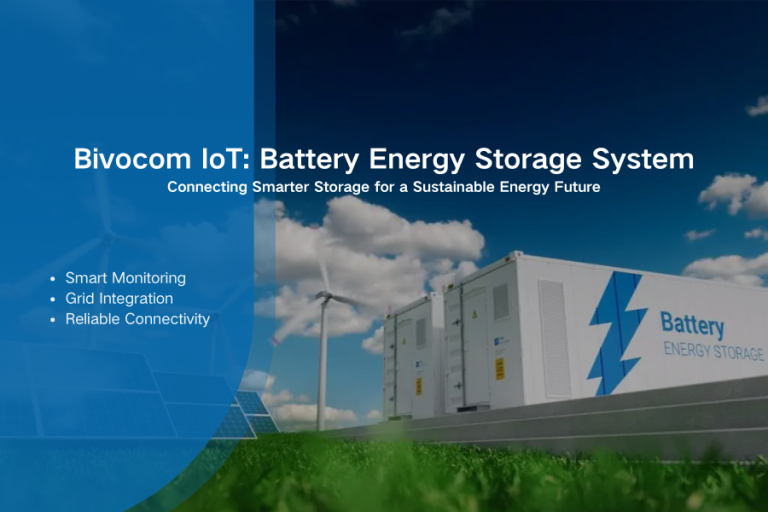
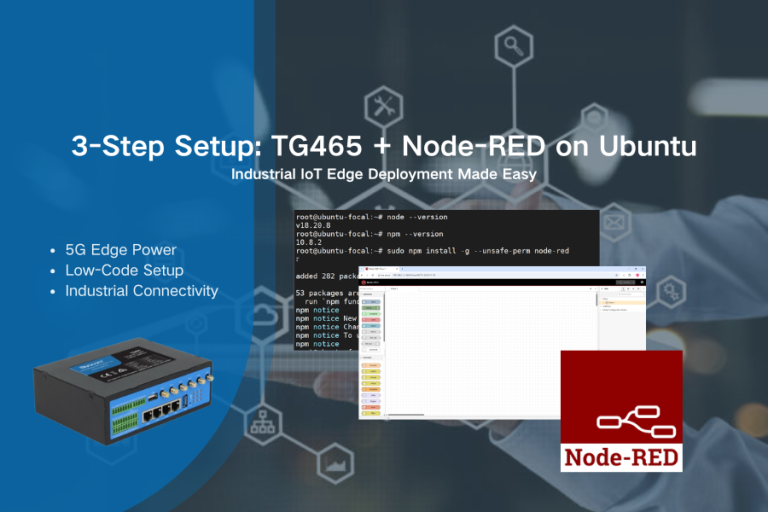
6 Comments